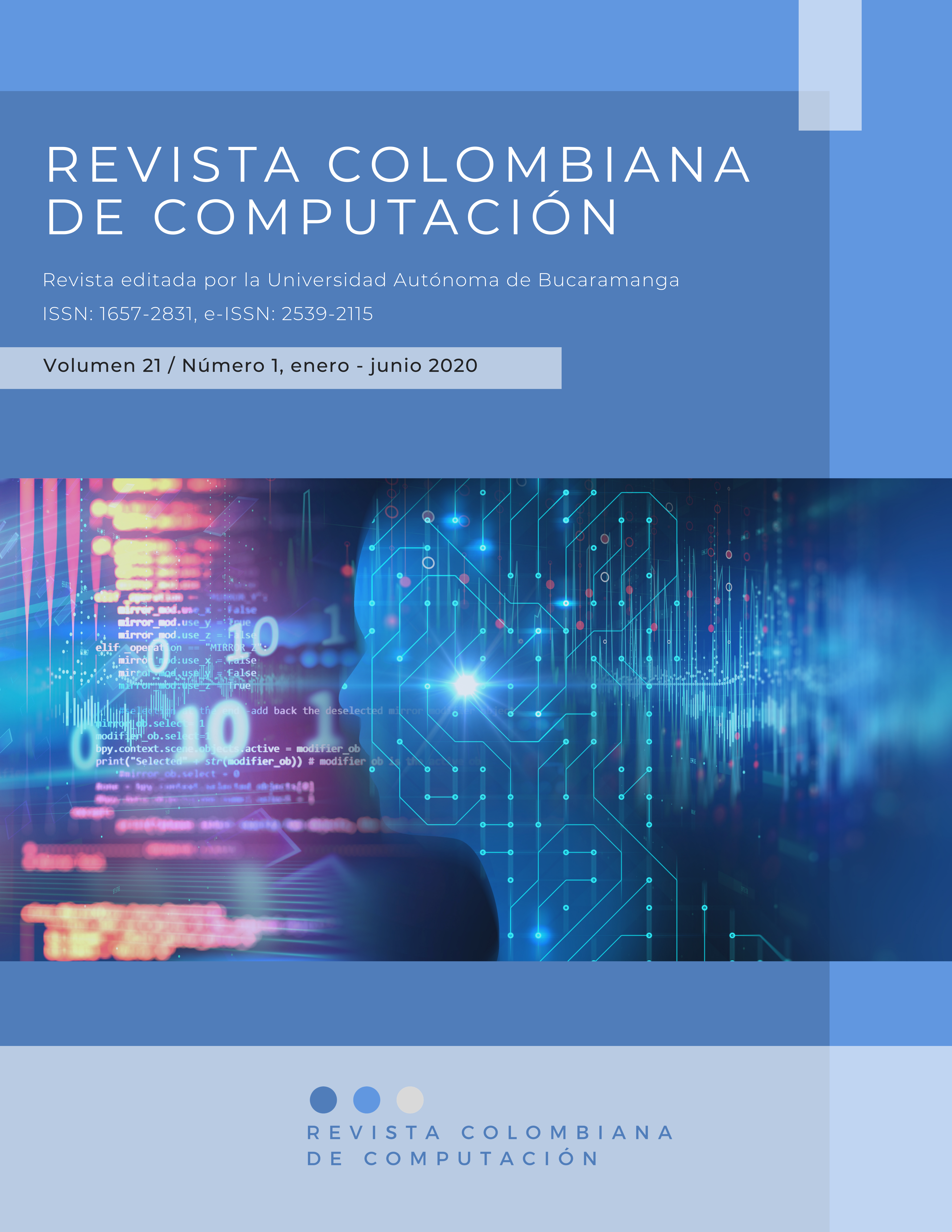“UvaMate”, un juego serio para el aprendizaje de matemáticas para niños con TDAH: Evaluación de usabilidad
Resumen
En la actualidad, si bien existen juegos enfocados al desarrollo de habilidades lógico-matemáticas dirigidos a lograr la atención de niños con TDAH, no hay aplicaciones para el aprendizaje en la resolución de problemas matemáticos. Alineado a esta problemática, se llevó a cabo el diseño y desarrollo de un juego serio que permita que los niños alcancen un aprendizaje significativo en este tema. Se realizó la evaluación de la interfaz de una sección del juego enfocada al concepto de conteo, se trabajó con 7 docentes mediante un experimento de Mago de Oz. Sumado a lo anterior, se aplicó un cuestionario de CSUQ, se recolectaron datos generales de los docentes como sexo y edad. Por otra parte, se valoró la experiencia de los niños durante el uso de la aplicación. El estudio indica que la interfaz actual es utilizable; sin embargo, necesita algunas mejoras en cuanto a tipografía, diseño de imagen y color.
Referencias bibliográficas
American Psychiatric Association. (2000). Diagnostic and Statistical Manual of Mental Disorders-IV-TR (revised). Washington, DC: American Psychiatric Association Press.
Artigas-Pallarés, J., & Narbona García, J. (2011). Trastornos del neurodesarrollo. Viguera editores.
Barkley, R. A., & Murphy, K. R. (2006). Attention-deficit hyperactivity disorder: A clinical workbook (3rd editio). Guilford Press.
Bul, K. C. M., Franken, I. H. A., Van der Oord, S., Kato, P. M., Danckaerts, M., Vreeke, L. J., … Maras, A. (2015). Development and User Satisfaction of “Plan-It Commander,” a Serious Game for Children with ADHD. Games for Health Journal, 4(6), 502–512. https://doi.org/10.1089/g4h.2015.0021
Dow, S., Lee, J., Oezbek, C., MacIntyre, B., Bolter, J. D., & Gandy, M. (2005). Wizard of Oz interfaces for mixed reality applications. En CHI ’05 extended abstracts on Human factors in computing systems - CHI ’05 (pp. 1339–1342). New York, New York, USA: ACM Press. https://doi.org/10.1145/1056808.1056911
Echeverry Chaves, N., & González Valencia, S. A. (2014). Diseño de un videojuego didáctico de educación cívica para niños autistas, TDAH y discapacidad cognitiva. Teoría y Praxis Investigativa, 9(2), 116–127.
Fernández Martín, F. D., Hinojo Lucena, F. J., & Aznar Díaz, I. (2003). Dificultades del alumnado con déficit de atención con hiperactividad (TDAH) en el aula: implicaciones para la formación docente. Enseñanza: anuario interuniversitario de didáctica, 21, 219–232.
Ford, M. J., Poe, V., & Cox, J. (1993). Attending behaviors of ADHD children in math and reading using various types of software. Journal of Computing in Childhood Education, 4(2), 183–196.
Fraser, N. M., & Gilbert, G. N. (1991). Simulating speech systems. Computer Speech & Language, 5(1), 81–99. https://doi.org/10.1016/0885-2308(91)90019-M
Geary, D. C. (2004). Mathematics and Learning Disabilities. Journal of Learning Disabilities, 37(1), 4–15. https://doi.org/10.1177/00222194040370010201
Higgins, S. (2000). The logical zoombinis. Teaching thinking, 1(1), 12–15.
Jenkins, H. (2002). Game theory: Digital renaissance. Technology Review, 1–3.
Keller, S. M. (1992). Children and the Nintendo.
Klimenko, O. (2009). Las dificultades en la autorregulación asociadas al TDAH y los aportes de la teoría históricocultural para su abordaje intracurricular. Revista Iberoamericana de Educación, 49(8), 1–10.
Lau, H. M., Smit, J. H., Fleming, T. M., & Riper, H. (2017). Serious Games for Mental Health: Are They Accessible, Feasible, and Effective? A Systematic Review and Meta-analysis. Frontiers in Psychiatry, 7. https://doi.org/10.3389/fpsyt.2016.00209
Lewis, J. R. (1995). IBM computer usability satisfaction questionnaires: Psychometric evaluation and instructions for use. International Journal of Human-Computer Interaction, 7(1), 57–78. https://doi.org/10.1080/10447319509526110
Londoño Palacio, O. L., Maldonado Granados, L. F., & Calderón Villafáñez, L. C. (2014). Guías para construir estados del arte. Bogotá D.C.
Mahmoudi, H., Koushafar, M., Saribagloo, J. A., & Pashavi, G. (2015). The Effect of Computer Games on Speed, Attention and Consistency of Learning Mathematics among Students. Procedia - Social and Behavioral Sciences, 176, 419–424. https://doi.org/10.1016/j.sbspro.2015.01.491
McFarlane, A., Sparrowhawk, A., & Heald, Y. (2002). Report on the educational use of games. Cambridge: TEEM (Teachers evaluating educational multimedia).
Miranda, A., Jarque, S., & Tarraga, R. (2006). Interventions in School Settings for Students With ADHD. Exceptionality, 14(1), 35–52. https://doi.org/10.1207/s15327035ex1401_4
Miranda Casas, A., Soriano Ferrer, M., & García Castellar, R. (2002). Optimización del proceso de enseñanza/aprendizaje en estudiantes con trastorno por déficit de atención con hiperactividad (TDAH). EduPsykhé: Revista de psicología y psicopedagogía, 1(2), 249–274.
Munoz, H. T., Navarro, S. B., & Fabregat, R. (2014). Gremlings in My Mirror: An Inclusive AR-Enriched Videogame for Logical Math Skills Learning. En 2014 IEEE 14th International Conference on Advanced Learning Technologies (pp. 576–578). IEEE. https://doi.org/10.1109/ICALT.2014.168
Nur, N., & Kavakci, O. (2010). Elementary school teachers’ knowledge and attitudes related to attention deficit hyperactivity disorder. HealthMED, 4(2), 350–355.
Palacios–Cruz, L., de la Peña, F., Valderrama, A., Patiño, R., Calle Portugal, S. P., & Ulloa, R. E. (2011). Conocimientos, creencias y actitudes en padres mexicanos acerca del trastorno por déficit de atención con hiperactividad (TDAH). Salud mental, 34(2), 149–155.
Rieber, L. P. (1996). Seriously considering play: Designing interactive learning environments based on the blending of microworlds, simulations, and games. Educational Technology Research and Development, 44(2), 43–58. https://doi.org/10.1007/BF02300540
Rief, S. F. (2012). How to reach and teach children with ADD/ADHD: Practical techniques, strategies, and interventions (Second Edi). John Wiley & Sons, Inc.
Stephen, E. (2005). Highlights of the Attention Deficit Hyperactivity Disorder (ADHD). News Media Briefing. Medscape Psychiatry and Mental Health.
Wallace, N. (2005). The Perceptions of Mothers of Sons with ADHD. Australian and New Zealand Journal of Family Therapy, 26(4), 193–199. https://doi.org/10.1002/j.1467-8438.2005.tb00674.x
Whitebread, D. (1997). Developing children’s problem-solving: the educational uses of adventure games. En Information technology and authentic learning (pp. 13–37). London: Routledge.
Wouters, P., van Nimwegen, C., van Oostendorp, H., & van der Spek, E. D. (2013). A meta-analysis of the cognitive and motivational effects of serious games. Journal of Educational Psychology, 105(2), 249–265. https://doi.org/10.1037/a0031311
Zimmerman, B. J., & Schunk, D. H. (2001). Self-regulated learning and academic achievement: Theoretical perspectives (Second Edi). Routledge.













